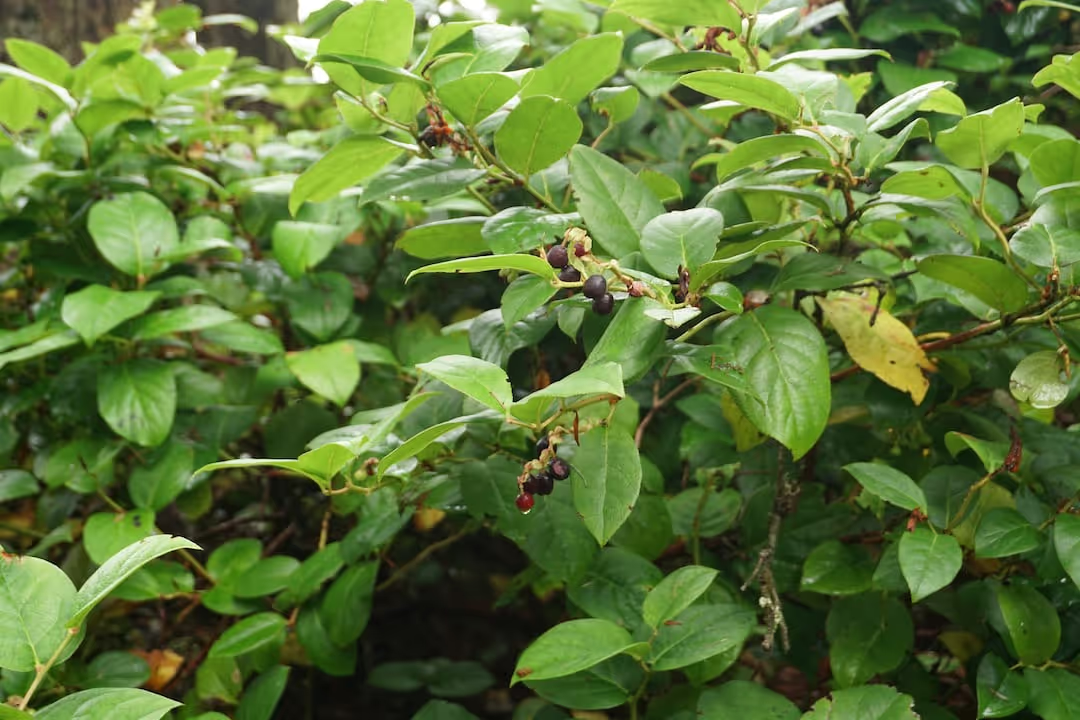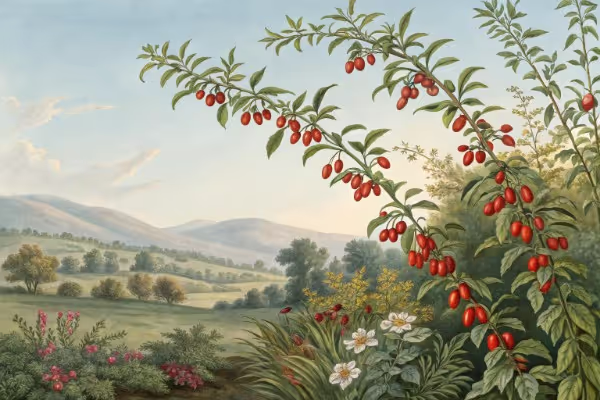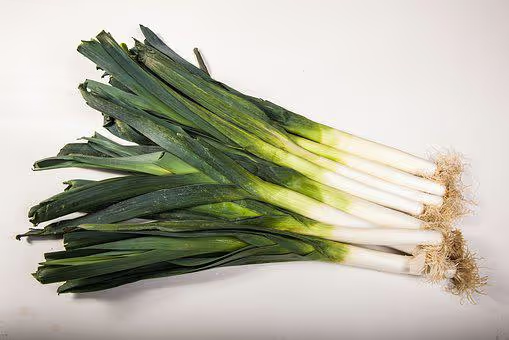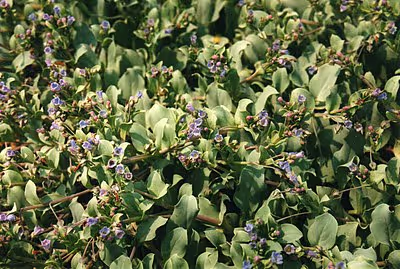Growing Salal: How to Cultivate a Healthy Native Shrub

Growing Salal
Growing Salal rewards gardeners with lush, dark-green foliage and sweet, blueberry-like berries, thriving effortlessly in shady gardens with moist, well-drained, slightly acidic soil. Start by planting salal in partial shade, water regularly until established, and mulch generously to mimic its natural woodland habitat. Ready to cultivate this native beauty in your own backyard? Here's how to ensure your salal flourishes.
Cheatsheet: Mastering Salal for Native Gardens
🌱 Site & Soil
- Light: Part shade to dappled sun
- Soil: Acidic (pH 4.5–6), rich, well-draining
- Space: 3–5 ft (1–1.5 m) apart
- Native to Pacific Northwest forests
🛠️ Tools and Products You'll Need
- Spade
- Compost or leaf mold
- Mulch (pine needles, bark)
- Pruners
- Watering can or hose
🔪 Step-by-Step
- Prep Time: 15 min — Remove weeds, loosen soil to 12 in (30 cm)
- Amend: Mix compost or leaf mold into planting hole
- Plant: Set root ball flush with surface; fill
- Water: Soak deeply; keep moist first year
- Mulch: 2–3 in (5–8 cm) to retain moisture
- Maintain: Light prune after flowering
💧 Water & Care
- Irrigate in drought; prefers damp but unsoggy roots
- Resists deer, salt spray, cold to 10°F/–12°C
- Rarely needs fertilizer
🍇 Harvest & Use
- Berries ripen late summer–fall
- Rich in antioxidants, vitamin C
- Eat fresh, jam, or dry
- Leaves: Traditional tea
⚡ Fast Facts
- Pollinators: Native bees
- Supports wild birds
- Lifespan: 30+ years
- Spreads by rhizomes—great for erosion control
-
Growing Salal: Site, Soil, and Light
Salal (Gaultheria shallon) thrives where conifers drop needles and the soil stays springy with humus. I plant it where morning sun kisses the leaves and afternoon shade keeps them cool.
Growing Salal starts with acidic, well drained ground that never turns soupy. Aim for pH 4.5 to 6.0 and mix in conifer bark, leaf mold, and coarse compost.
Soil chemistry that salal actually likes
I test pH, then correct with elemental sulfur if readings creep above 6.5. Avoid lime and high phosphorus fertilizers, which slow ericaceous roots and their mycorrhiza.
Loosen the top 20 to 30 cm of soil and blend in fine fir bark to add porosity. Dense clay needs mounded beds 15 to 20 cm high for dependable drainage.
Light and microclimate
Inland, I give salal dappled light or bright shade to prevent leaf scorch. Near the coast, full sun works because fog and wind keep leaves cool.
USDA zones 6 to 9 suit it well. It shrugs at salty air and gritty soils that would humble fussier shrubs.
Planting and Spacing
Plant in early fall or early spring while soils are cool. Space 45 to 90 cm apart for a groundcover or 1.2 m if you want individual shrubs.
- Soak the pot for 15 minutes, then tease apart circling roots without tearing the root plate.
- Set the crown level with the soil line and backfill with native soil plus 25 percent fine bark.
- Water deeply, then mulch 5 to 8 cm with bark or pine needles, keeping mulch off the stems.
Water, Mulch, and Feeding
Keep the root zone consistently moist for the first two summers, then taper to deep, infrequent soakings. I target 2.5 cm per week in summer, delivered in one or two sessions.
Use pine needle or bark mulch to hold moisture and feed fungi. If growth looks pale, feed lightly in spring with an acid-forming rhododendron fertilizer at label rates.
Pruning and Control
Salal runs by rhizomes, which build glorious thickets and occasionally invade paths. I slice stray rhizomes with a flat spade every spring and edge beds clean.
After bloom, clip stems you want for lush regrowth and to shape the plant. Avoid hard shearing, which leaves a hedgey shell and woody gaps.
Propagation
Semi-hardwood cuttings
Take 8 to 12 cm cuttings in late summer with a small heel attached. Dip in 0.3 percent IBA rooting powder and stick into a 1 to 1 mix of perlite and fine bark at 21 C or 70 F bottom warmth.
Mist lightly and ventilate well. Roots form in 6 to 10 weeks, then pot into an acidic mix and grow on in bright shade.
Division and layering
I lift young rhizome shoots with roots in early fall and replant immediately. Natural layering happens under mulch, so I often just slice and transplant rooted stems.
Seed
Seed is tiny and benefits from 60 to 90 days of cold stratification at 1 to 5 C or 34 to 41 F. Sow on the surface of a sterile ericaceous mix and keep evenly moist, not wet.
Containers and Small Spaces
Grow in a 15 to 20 liter container with a peat-free ericaceous blend based on fine bark and coir. I add 20 percent perlite for air, then water deeply and let the top 2 cm dry before watering again.
Feed lightly in spring with an organic azalea-grade fertilizer. Repot every 2 to 3 years to reset the media and trim circling roots.
Pests, Diseases, Troubleshooting
Salal stays clean in the ground if drainage is sound. Phytophthora root rot appears in waterlogged soils, so I fix the grade and add air, not fungicide first.
In pots, watch for vine weevil larvae nibbling roots. Sticky cards and beneficial nematodes work, and I top-dress with coarse grit to deter egg laying.
Companions and Design
I pair salal with sword fern, evergreen huckleberry, red huckleberry, and low Oregon grape for an evergreen woodland mix. Under conifers, the palette looks like it grew there on its own.
For flowers, tuck in trillium, inside-out flower, and native oxalis in the gaps. Their spring show floats above the glossy salal leaves.
Harvest and Use
Florists prize salal for cut foliage because the leaves last 2 to 3 weeks in a vase. I cut 30 to 45 cm stems, recut under water, and strip the lower leaves.
Berries ripen late summer to fall, tasting mildly sweet with a resinous note. I cook them into jam with lemon and a touch of honey, then strain for a silky texture.
Buying Guide: Plants, Starts, and Foliage
Look for well-rooted 1 liter or 1 gallon plants with fresh, deep green leaves. Avoid yellowing, floppy liners and pots with circling roots glued to the wall.
- Expect to pay 10 to 20 USD or 9 to 18 EUR for a 1 gallon plant at native nurseries.
- Plug trays cost less per plant but need a year to fill in.
- Florist foliage bunches run 5 to 12 USD or 4.5 to 11 EUR wholesale, more at retail.
Ask growers whether stock is seed grown or divided from local ecotypes. Local genetics settle faster and handle your microclimate with less fuss.
Comparisons and Alternatives to Salal
- Evergreen huckleberry (Vaccinium ovatum): denser fruit set and more vertical habit, needs similar acidic soil.
- Kinnikinnick (Arctostaphylos uva-ursi): tighter groundcover for hot, sandy, dry sites, shorter and fussier about summer irrigation.
- Low Oregon grape (Mahonia nervosa): coarser texture and spring flowers, tolerates slightly higher pH than salal.
- Pacific rhododendron (Rhododendron macrophyllum): larger shrub for backdrop structure, pairs with salal as an understory skirt.
Numbers and Natural History
Salal ranges from southeast Alaska to central California and often dominates coastal forest understories. It spreads by rhizomes that knit soils and shelter wildlife year round.
“Salal is a dominant understory shrub along the Pacific coast, frequently forming dense thickets via rhizomes.” USDA NRCS Plant Guide, Gaultheria shallon.
In old conifer stands I have measured patches with more than 50 percent cover. That living mat keeps duff moist, slows erosion, and feeds a web of soil fungi.
“Ericaceous plants depend on ericoid mycorrhiza for nutrient uptake in acidic, nutrient-poor substrates.” British Columbia Ministry of Forests, Silvics notes.
WSU Extension lists optimal soil pH for salal at roughly 4.5 to 6.0. OSU Extension field guides place mature height at 0.6 to 1.5 m in most gardens, with larger forms in foggy coastal belts.
Seasonal Calendar for Growing Salal
- Late winter: test pH, add sulfur if needed, refresh mulch.
- Spring: plant, light feed, tip-prune after bloom, monitor for weevils in pots.
- Summer: deep water weekly in heat, harvest foliage and berries, edge rhizomes.
- Fall: divide rhizome shoots, take semi-hardwood cuttings, plant new stock in cool soils.
FAQ: Growing Salal
How much sun can salal take. In gardens away from the coast I cap direct sun at 3 to 4 hours, then give high shade.
Will it grow in alkaline soil. It survives poorly, so I switch to evergreen huckleberry or amend heavily and build raised acidic beds.
How cold can it go. Plants in my zone 6 sites have handled single digits Fahrenheit, about minus 13 C, when soils drained and mulch was in place.
Is it safe to eat the berries. Yes for correctly identified salal, and I only forage from clean, chemical-free sites.
My field notes and small tricks
I get thicker leaves by watering at dawn and never wetting foliage in afternoon heat. A light pinch in late spring doubles the number of florist-grade stems by fall.
Where soil stays stubbornly soggy, I build a 20 cm berm with 60 percent fine bark, 30 percent native soil, and 10 percent compost. That blend hits the sweet spot between air and moisture.
Trusted sources I lean on
- USDA NRCS Plant Guide, Gaultheria shallon. Distribution, ecology, and botany.
- US Forest Service Fire Effects Information System. Cover values and understory dynamics.
- Washington State University Extension. Soil acidity ranges and native shrub culture.
- Oregon State University Extension. Coastal shrub ID and garden performance notes.
- British Columbia Ministry of Forests, Silvics of British Columbia. Ericaceous root and mycorrhiza relationships.
Frequently Asked Questions About Growing Salal
What growing conditions does salal prefer?
Salal flourishes best in partial shade to full shade. Choose a spot under larger trees where filtered sunlight gently reaches the plant. Maintain slightly acidic or neutral soil (pH between 5.5 and 7.0) to optimize growth and help the plant thrive.
How often should salal plants be watered?
Water salal regularly during the first growing season to establish strong roots. Afterward, provide supplemental irrigation only in extended dry spells. Aim to keep soil moderately moist, but avoid waterlogging to prevent root rot.
What is the ideal temperature range for successful salal growth?
Salal favors mild to cool temperatures, comfortably thriving in the range of 45–65°F (7–18°C). Although frost-tolerant once established, protection from harsh winter winds enhances overall plant health.
Does salal require fertilization?
Salal typically thrives without heavy fertilization. However, applying a thin layer of organic mulch, such as compost or leaf mold, around the base each spring enriches the soil naturally and encourages steady, healthy growth.
How do I prune salal properly?
Prune salal lightly each spring to remove damaged or crowded branches, promoting airflow and fresh growth. Focus on removing older stems at the base using clean pruning shears to encourage vigorous new shoots and maintain a tidy appearance.
Are there common pests or diseases affecting salal?
Salal generally resists most pests and diseases. However, occasionally check for signs of aphids or fungal infections, such as powdery mildew. Maintain appropriate spacing and prune for airflow to minimize potential issues naturally.
Can I propagate salal at home?
Certainly! Salal is easily propagated through stem cuttings or layering. For stem cuttings, choose new, semi-hardwood growth in early summer and plant them in well-draining rooting medium. Maintain even moisture until roots develop.
Growing Salal rewards those who pay attention to the details: acidic soil, dappled light, and patience. Give this Pacific Northwest native what it craves, and you'll end up with a shrub that thrives on neglect, feeds pollinators, and offers edible berries for your kitchen. Keep mulch handy, water in the dry months, and let its roots stretch out—they prefer community over solitude. Mix it with other native edibles or shade lovers, much like you would with buffaloberry, and you'll craft a piece of the wild that's tough to beat. Growing Salal isn't about chasing perfection—it's about letting nature do what it does best, with just a nudge from you.
Health Benefits of Growing Salal at Home
Antioxidant-Rich Berries
Salal berries carry powerful antioxidant compounds including anthocyanins, known to neutralize oxidative stress and inflammation.
Essential Vitamins and Nutrients
- Vitamin C powerhouse: 100g (3.5 oz) contains roughly 15mg Vitamin C, enhancing immunity function.
- Iron and manganese: Offers trace minerals essential for cellular metabolism and bone density maintenance.
Dietary Fiber Source
Each serving (100g or 3.5 oz) provides approximately 5 grams dietary fiber, aiding digestion and gut microbiome wellness.
Anti-Inflammatory Uses
Traditionally used by Native communities, salal leaf infusions can ease topical inflammation and oral irritation.
Blood Sugar Regulation
Salal berries exhibit low glycemic qualities, making them beneficial substitutes in diabetic dietary management.
Sustainable Home-Grown Wellness
- Fresh berries easily preserved by drying or freezing for year-round nutrition.
- Integrates into backyard edible permaculture systems, reducing dependency on commercial supplements.
Find out which plants will thrive in your garden!
Answer a few fun questions and get custom plant recommendations perfect for your space. Let’s grow something amazing together!

start your season





